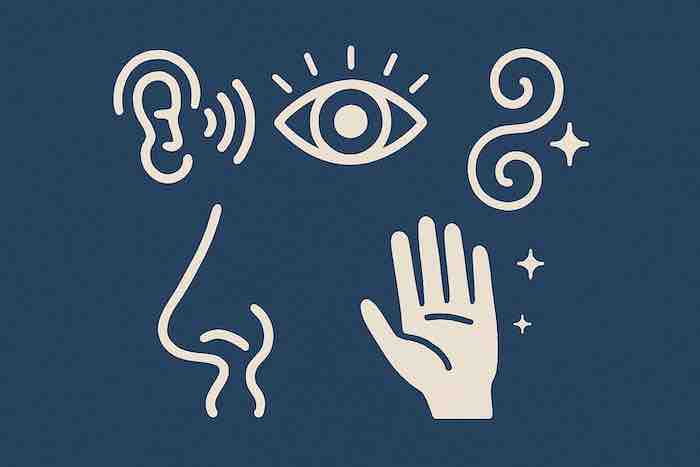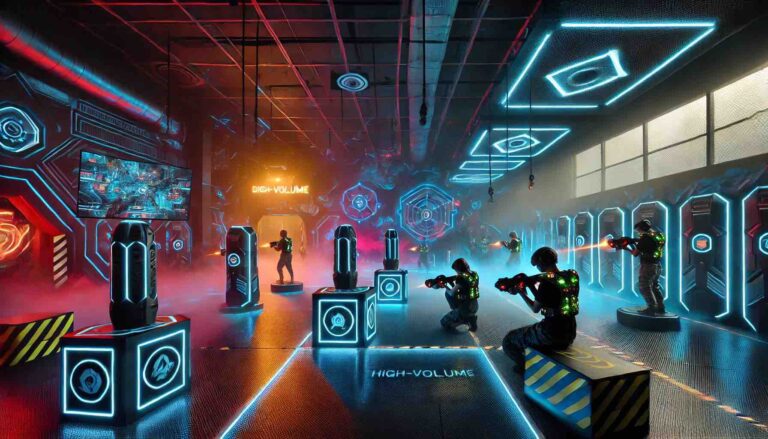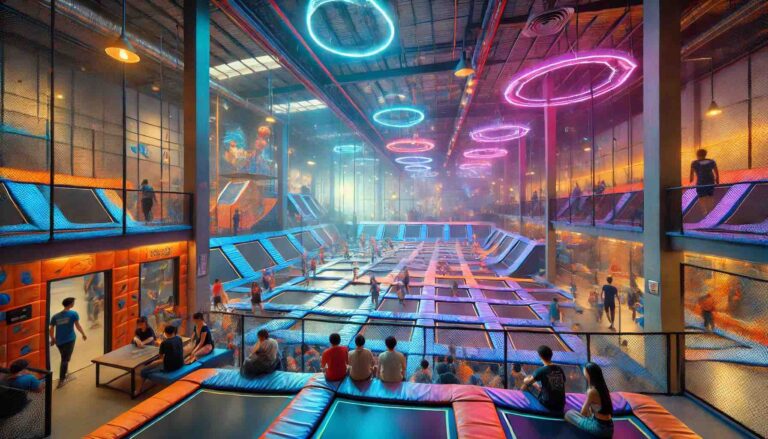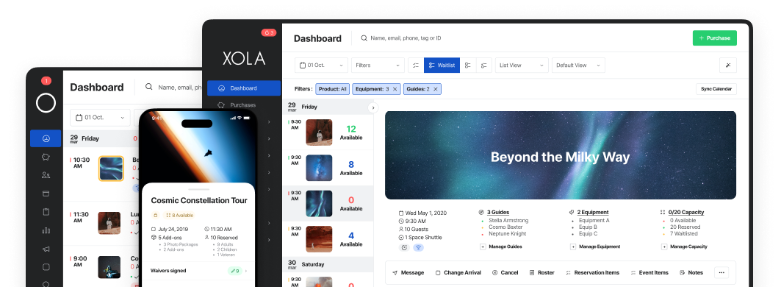
What happens when you walk into a Disney theme park? You’re instantly greeted by cheerful music, sparkling lights, and vibrantly dressed characters. Going to Disney isn’t just a theme park visit, it’s a full sensory experience designed to engage every one of your five senses.
Disney has mastered this approach, combining sight, sound, smell, and more to create an unforgettable experience for visitors.
Sensory marketing, used in a similar way, can make a lasting impression on guests at attractions and tours. This guide will explore how sensory marketing works and why it’s a game-changer for the industry.
What is sensory marketing?
Sensory marketing is about engaging one or more of the five senses to create a memorable experience that resonates with your audience. Rather than simply displaying an ad, the idea here is to appeal to another of their senses, like sound or taste, to cause a more significant impact and forge a deeper connection with the consumer.
In the tours and attractions industry, sensory marketing can transform a simple experience into something really extraordinary. For example, a hot air balloon tour operator could use virtual reality glasses to give potential customers a taste of the stunning views they’ll experience flying, all while staying on the ground.
Similarly, a walking tour operator could enhance the atmosphere of a historic district by integrating ambient sounds or music, such as the hustle and bustle of an old-time market. This sensory approach creates a more immersive and memorable experience for visitors.
By strategically engaging the senses, you can create a deeper connection with your audience, leading to increased bookings and more referrals through word-of-mouth.
Is sensory marketing an art or a science?
It’s a bit of both. Sensory marketing sits at the intersection of both art and science.
It can be viewed as an art in the way it taps into human emotions, using creativity to make experiences feel personal and impactful. Yet the aesthetic decisions like deploying the scent of fresh flowers to create a relaxing atmosphere or the warm glow of lighting to make a space feel cozy are deeply rooted in emotional connections. In other words, the artistic elements are influenced by human psychology.
This makes sensory marketing undeniably a science. It’s a marketing approach backed by research showing that certain smells, sounds, or visuals can trigger emotional responses and alter a consumer’s perceptions. Science comes into play when deciding how to strategically use these sensory elements to influence actions.
In short, sensory marketing is both an art and a science. It blends creativity with data-driven tactics to increase bookings or encourage guests to spend more time at an attraction.
Why is sensory marketing important for tours and attractions?
Consumers are inundated with ads daily. On average, people receive about 120 emails per day. The average person is exposed to between 4,000 and 10,000 ads across various platforms daily.
Needless to say, this overwhelming exposure leads to ad fatigue, the phenomenon when consumers become desensitized to traditional advertising methods. To break through this clutter, sensory marketing offers a fresh approach. When a brand reaches beyond the phone screen and gives customers a hands-on experience, it provides a break from all the noise.
They’re no longer treated like just another marketing figure — one of a thousand page views or clicks. Now, they can interact with a brand in real life, making the experience more meaningful. This is why sensory marketing creates lasting impressions. People remember experiences that engage their senses more vividly than those that don’t. Incorporating sensory elements into your marketing shows customers you value their time and loyalty.
The five senses in marketing and how it can help you attract more tourists
When marketing your attraction, you don’t have to rely solely on visuals or words to get your message across. By engaging all five senses, you can create a richer experience that better converts visitors than a standalone ad. Let’s explore each sense and how appealing it can elevate your marketing strategy.
Sight
Sight is the most potent sense in marketing and is often your first impression. People are drawn to visuals: Over 40% of consumers say they’ve been inspired to purchase after seeing digital signage while shopping in-store. So, striking imagery, colors, and designs can significantly impact your brand’s perception.
Disney, for example, often creates promotional videos featuring smiling families or fireworks lighting up the sky, all aimed at evoking a sense of nostalgic joy. You can replicate this for your attraction by highlighting unique visual features — like breathtaking landscapes or action-packed activities — through professional photos or videos. This works online and on-site, where you could set up thematic environments that align with your attraction’s visual identity, such as a forest-themed check-in office for a zipline course.
Sound
Think of State Farm’s “Like a Good Neighbor” audio signature. The insurance company has successfully used a short, catchy audio that immediately triggers recognition of their brand. You instantly associate the familiar tune with State Farm’s friendly image whenever you hear it. This is an excellent example of sonic branding.
Sound can instantly set the tone for your brand and an overall experience. The right soundtrack or sound effects can elevate the atmosphere of your attraction and immerse your guests even further in their visit.
For example, at places like Warner Bros. Studios in London, the iconic Harry Potter soundtrack sets the mood for the “magical experience” ahead. Whether it’s a cheerful jingle played at key points in the experience like when visitors enter or exit an exhibit, or a specific sound tied to a unique feature, like a ride or show, this sonic branding can set the tone and make your attraction more recognizable.
Smell
The smell is an interesting sense to appeal to. Scents have a unique connection to memory, making them an excellent tool for creating lasting impressions. When customers smell something, they’re not just experiencing a scent; they’re often transported to a specific place or time.
Airlines, for instance, use signature scents to evoke a specific feeling. For Singapore Airlines, the chosen scent conveys warmth and luxury, which aligns with the airline’s brand identity.
For your attraction, scents can play a role in making the experience more immersive. Imagine a vineyard tour where the smell of fresh grapes fills the air, giving visitors a whiff of the wine-tasting experience to come. Or, if you’re running an eco-tourism operation, a signature rainforest scent could be used to transport visitors into the heart of the forest, even before they step outside. These subtle yet effective sensory cues can strengthen visitors’ emotional connection with your attraction.
Taste
The sense of taste is particularly relevant to food-related attractions, but it can also be effectively used in other industries. When visitors taste something delicious, they create a direct and lasting link to the experience. Pairing taste with smell amplifies the impact, as these senses work together to make the moment more memorable.
Take the Glenfiddich Distillery, where guests are taken on an immersive whisky-tasting journey. Not only do they smell and taste the whiskey, but they learn how different processes affect flavor.
Even attractions with a less food-centric focus can tap into taste. For instance, a historical tour in a city known for its distinct culinary history can partner with local food vendors to create a sensory stop where visitors can taste historically significant meals.
Touch
Touch is often overlooked in marketing. Yet when visitors physically interact with your environment or products, they are instantly more connected to the experience. Apple’s retail stores excel in this area by allowing customers to handle their products, creating a special emotional attachment to their products.
When attractions integrate the sense of touch in their marketing activations, visitors feel like active participants. There’s a Titanic exhibit in Tennessee, for example, where guests can run their hands through a trough of icy water. And the French railway company that placed colorful doors around Europe, inviting passersby to open them. Inside, scenes of other European cities played on a screen. No one will remember the 10th email they received about a promo ticket to London; yet most will remember the time they opened a door to a real-life scene of the London Bridge.
How to create a multi-sensory experience
A multi-sensory experience should engage more than just the viewers’ eyes. Sensory marketing combines sight, sound, smell, touch, and taste to craft an unforgettable moment between the audience and your brand.
Think of it this way: The more senses you can stimulate, the better the experience and the higher the chance visitors will return to your attraction.
Here’s a look at how you might engage different senses:
- Sight + Sound: Set the scene with visual and audio cues. Together, striking visuals with relevant sounds can create an intense atmosphere for your guests. The synergy of visual and auditory stimuli can transport visitors to another place and time, deepening their connection with the experience. Consider how movie studios use soundtracks to heighten emotions — a historical site could similarly play sounds of bustling marketplaces or nature to evoke a particular period or place in history.
- Smell + Taste: Create an immersive experience through unique scents and flavors. Adding scent to your marketing is a powerful way to trigger emotions, as the sense of smell is directly tied to the brain’s memory center. The sensory pairing of taste and smell immerses visitors and enhances their appreciation of the product. As an operator, consider infusing your experience with local flavors, such as serving food or drinks unique to your city. This allows tourists to literally “taste” the culture they are exploring.
- All 5 Senses: The more senses you engage, the more likely your visitors will fully immerse in the experience. We can always turn to Disney for cues. Each theme park uses sights, sounds, and smells in perfect harmony to enhance its theme parks. Walking down Main Street, for instance, guests are greeted by a mix of cheerful music, colorful displays, and the aroma of freshly baked cookies, creating a full-sensory experience.
Measuring the impact of sensory marketing
Measuring the impact on the senses isn’t as easy as calculating a website’s page views. You might ask yourself, “How will I ever know whether a particular soundtrack influenced a guest’s booking decision?” While the answer won’t be so black and white, a list of relevant metrics can help you measure the ROI of experiential marketing campaigns.
- Customer Engagement: Measure engagement by tracking interactions at specific sensory touchpoints, such as the number of people interacting with a visual installation or the time spent in a room. Tools like heat maps or engagement trackers can show how visitors respond to specific sensory cues, such as music or smells.
- Social Media Mentions & Shares: When visitors share their experiences, it’s a sign that they’ve enjoyed themselves. Monitor mentions, hashtags, and shared photos related to your campaign. Tools like Hootsuite or Sprout Social can help track the online buzz and identify what elements of your campaign are being talked about most.
- Customer Satisfaction Surveys: Use post-visit surveys or comment cards to ask visitors how the sensory experience impacted their visit. Metrics like Net Promoter Score (NPS) or customer satisfaction ratings can clearly indicate how your sensory marketing efforts are perceived.
- Ticket Sales, Bookings, and Conversion Rates: Ultimately, the success of sensory marketing should lead to more bookings, purchases, or memberships. You can directly connect your sensory marketing campaigns to monetary outcomes by tracking these metrics. For example, you can compare conversion rates before and after implementing sensory elements to see if there’s a significant increase.
- Dwell Time: Dwell time refers to how long visitors stay at specific areas of your attraction. Use sensors or mobile apps to track visitors’ time in sensory-heavy areas; higher dwell time in these areas can signal that the experience keeps guests entertained for extended periods.
- Repeat Visits: Track visitor data to see how many guests return after their first visit. Loyalty programs or digital check-ins can help you monitor and reward repeat visitors.
Key Takeaways
If you’re an attraction operator or marketing director trying to get creative with marketing, here are our top 5 takeaways:
1. Sensory marketing drives engagement. By incorporating sight, sound, smell, taste, and touch into your marketing, the experience becomes fully immersive and automatically more memorable.
2. It’s both art and science. Sensory marketing blends creative techniques with psychology to evoke emotional responses, influencing visitor behavior and decision-making in a powerful, data-backed way.
3. Use multi-sensory experiences to stand out. Engaging multiple senses simultaneously like pairing visuals with music or integrating smells and tastes creates more impact. The more exciting the experience, the more it will be discussed on social media.
4. There are many ways to monitor the success of your sensory marketing campaign. Measure success through key metrics like customer engagement, social media buzz, and ticket sales. These metrics can help you calculate ROI and refine future campaigns.
5. Sensory marketing cuts through the ad clutter. With consumers bombarded by thousands of ads daily, sensory marketing provides a refreshing way to cut through the noise and capture attention meaningfully.
***
When someone walks into a Disney theme park, there’s no denying they’ve stepped foot on Disney territory. The same can be said about someone who enters a Harry Potter-themed store. That’s the power of sensory marketing. This approach offers a powerful way to cut through the digital clutter and make your brand stand out.
Sensory experiences don’t just grab attention — they hold it. The next time you plan a marketing campaign, think beyond the screen and create an experience visitors can see, hear, smell, taste, and feel.




